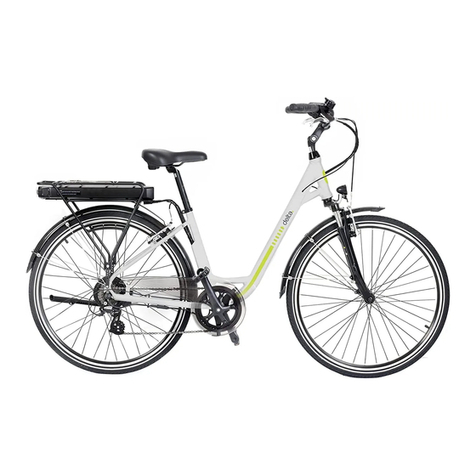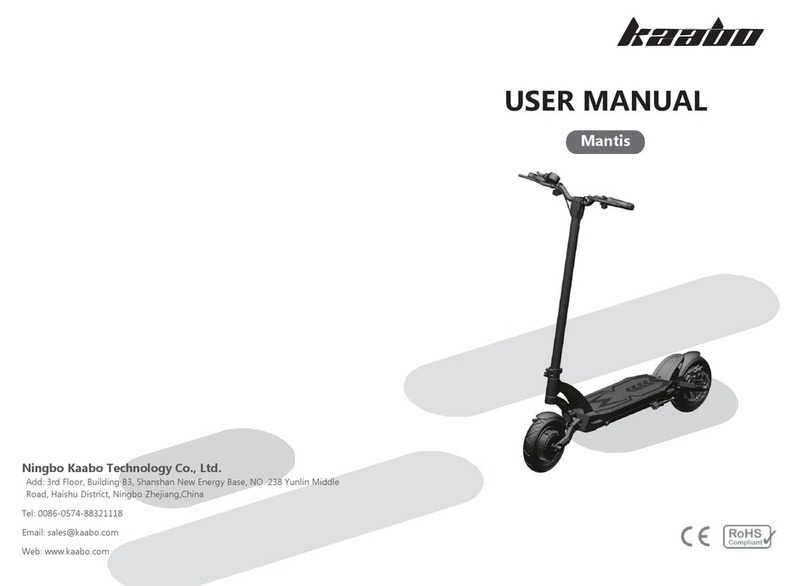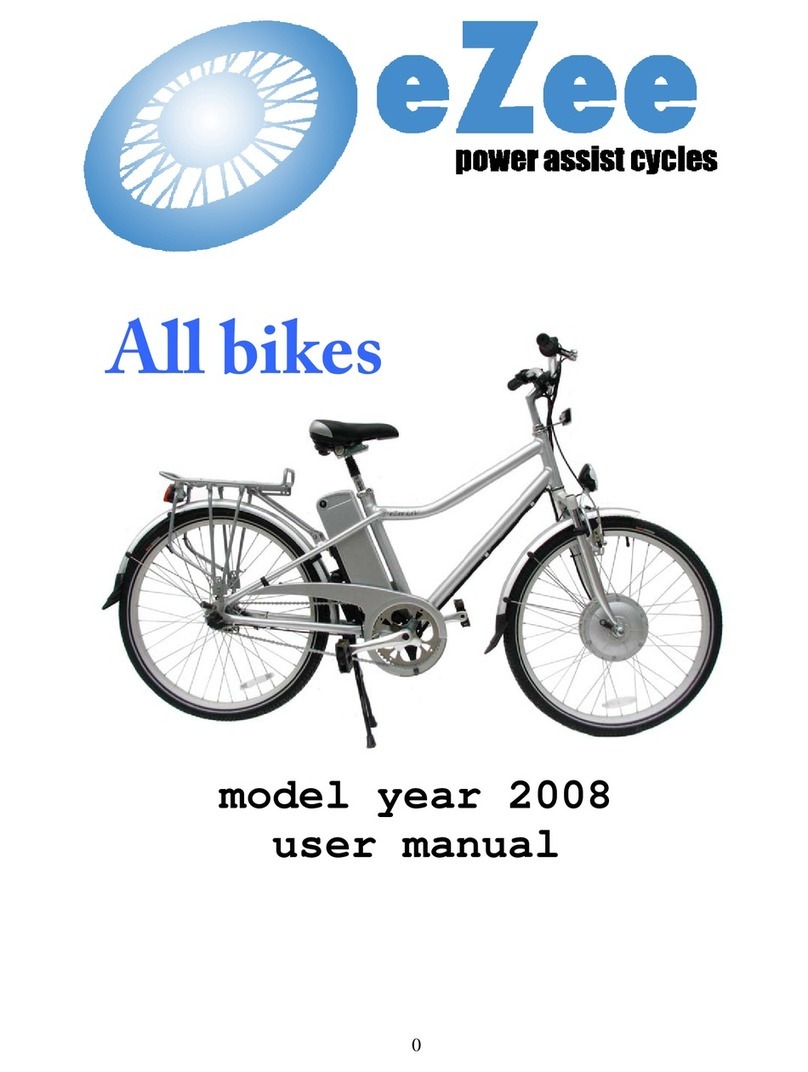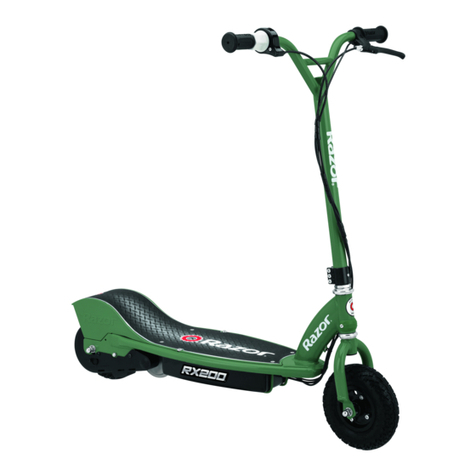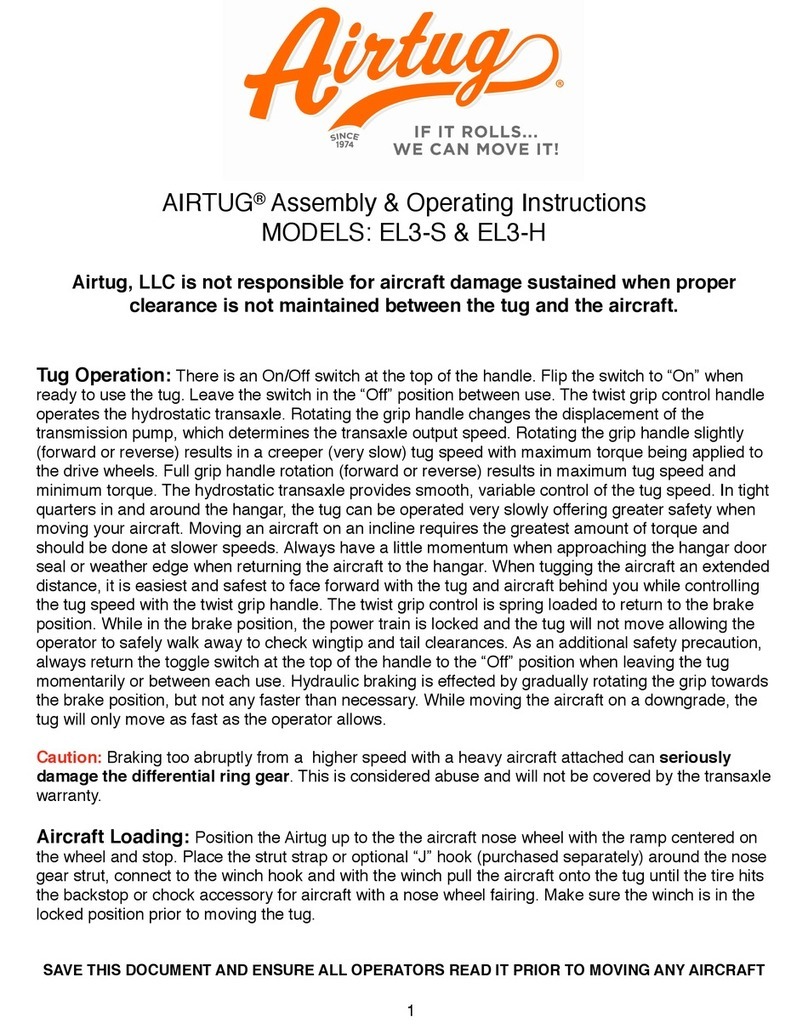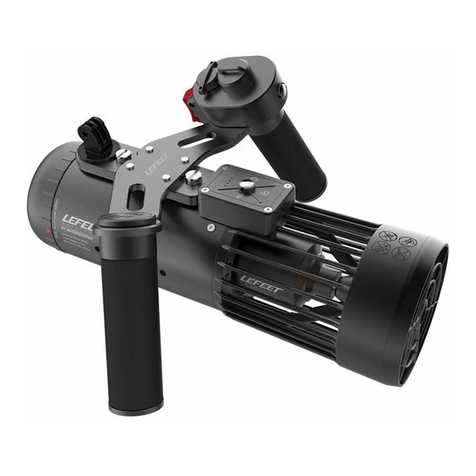Delta mDrive User manual

Page 1
USER MANUAL
mDrive
31-01-2022

Page 2
Table of contents
Important safety instructions............................................................................................3
BPSA Classication - Class 1 .............................................................................................4
Intended purpose......................................................................................................................4
Getting started............................................................................................................................ 6
Stem assembly............................................................................................................................7
Handlebar adjustment...........................................................................................................7
Stem angle adjustment........................................................................................................ 9
Front wheel installation......................................................................................................10
Saddle and seatpost assembly.................................................................................... 12
Pedal installation..................................................................................................................... 14
Getting started on the electrical system...............................................................16
Display LED ................................................................................................................................. 17
Assist functions ........................................................................................................................18
Troubleshooting.......................................................................................................................18
Installing and dismounting the battery..................................................................19
Battery charger/charging overview ........................................................................ 20
Battery information................................................................................................................ 21
Battery specications ..........................................................................................................22
Bike maintenance...................................................................................................................23
Brakes..............................................................................................................................................23
Brake maintenance ...............................................................................................................23
Gear shifter...................................................................................................................................24
Rear derailleur...........................................................................................................................24
Tires, tubes and wheels.....................................................................................................25
The chain.......................................................................................................................................26
Reectors......................................................................................................................................26
General maintenance ..........................................................................................................27
Transportation of electric bikes....................................................................................28
Road trac law.........................................................................................................................28
Insurance.......................................................................................................................................28
Frame number ..........................................................................................................................28
Wet weather conditions.....................................................................................................29
Night time operation............................................................................................................29
Promovec limited warranty............................................................................................ 30
Technical data ...........................................................................................................................32
Register the bike......................................................................................................................33

Page 3
IMPORTANT!
Read the safety instructions in this manual before use. If the precautionary
measures described are NOT followed, the warranty will be void. Failure to
follow this user manual could result in serious injury or even death.
WARNINGS
• To ensure that the charger and battery are handled in a safe way and that users
involved understand the danger of electricity, charging of the battery must only be
handled by persons aged 8 and up.
• Persons with reduced physical, sensory or mental abilities, lack of experience or
knowledge must be supervised or trained in the use of the battery and charger.
• Do NOT let children play with the battery and/or charger. Children must be
supervised if they perform any kind of cleaning and/or maintenance.
• Do NOT use this product or charger if any power cable is frayed, has broken
insulation or any other signs of damage.
• DO NOT attempt to recharge non-rechargeable batteries with the battery charger.
• For safety reasons, if charging the battery indoors the battery should be recharged
in a room with a re alarm installed.
• Only charge the battery with the included charger.
• Do not dismantle or damage the battery.
• Only use the Promovec battery included.
• Do not throw the battery into a re.
• Do not immerse the battery in water or any other liquid.
• Never charge the battery at temperatures below 32ºF (0ºC) or above 113ºF (45ºC).
• Do not heat, short circuit, puncture or otherwise mistreat the battery.
• Remove the battery from the bike when cleaning it.
• Do not change or tamper the electrical system.
• Disposal of batteries (Pg.
• Transportation of the e-bike (Pg.
SAVE THESE INSTRUCTIONS
IMPORTANT SAFETY INSTRUCTIONS
21).
28).
NOT

Page 4
BPSA CLASSIFICATION - CLASS 1
A “Class 1 electric bicycle” or “Low-speed pedal-assisted electric bicycle,” is a bicycle
equipped with a motor that provides power assistance only when the rider is pedalling.
The maximum assisted speed of this e-bike is 15.5 mph.
CONGRATULATIONS ON THE PURCHASE OF YOUR NEW
E-BIKE!
The Delta mDrive is a new generation of e-bike designed and developed based on
many years of experience with our e-bike partner Promovec. Please read this user
manual as it contains important information concerning the safe use and maintenance
of this e-bike.
The Delta mDrive is a modern e-bike that has been manufactured following the latest
production standards and techniques ensuring you have the highest quality bike with
premium performance.
If you have further questions regarding your e-bike operation or assembly, please
reach out to us at 800-474-6615 or www.designbydelta.com for Delta Customer
Service.
INTENDED PURPOSE
The e-bike is intended for use on regular paved surfaces as well as upaved surfaces,
gravel roads and trails with moderate grades.
CAUTION
• Do NOT use the e-bike in combination with a bike trailer.
• Always use original Promovec spare parts when replacing electrical components.
• Do NOT clean the e-bike with a high-pressure cleaner.
• If the electrical system is modied the warranty is null and void.

Page 5
WARNINGS:
• Using the e-bike outside the specied terrain may result in injuries and/or damage
to the e-bike.
• Wet weather impairs traction, braking and visibility, both for the bicyclist and for
other vehicles sharing the road. The risk of an accident is dramatically increased in
wet conditions, take proper precautions.
• Under wet conditions, the stopping power of your brakes (as well as the brakes of
other vehicles sharing the road) is dramatically reduced and your tires will not grip
as well. This makes it hard to control the speed of the bike and risk a loss of control.
To make sure that you can slow down and stop safely in wet conditions, ride slowly,
apply your brakes earlier and more gradually than you would under, dry conditions.

Page 6
GETTING STARTED
Assembly of this e-bike is recommended by a certied bicycle mechanic.
If you choose to assemble your e-bike it is recommended that your bicycle be
inspected by a certied bicycle mechanic prior to riding.
It’s important to follow this assembly guide. E-bikes are great fun but improper
assembly can result in serious injury and/or death.
The tools you will need to assemble this bike are as follows:
• 4mm Hex Key (included)
• 5mm Hex Key (included)
• 6mm Hex Key (included)
• Multi-wrench (included)
• 15mm open-ended wrench and/or a dedicated 15mm pedal wrench
(Recommend)
• Snips or cable cutters (not included)
• Torque wrench (not included)
• Pump to inate the tires (not included)
• Grease for the pedal axle threads, stem and seatpost (not incuded)
We recommend using a torque wrench to check all the nuts and bolts that require
assembly to meet the required torque settings.
Once the e-bike has been unpacked, make sure you have removed all the packaging
and dispose of it appropriately – much of the packaging materials can be recycled.
Before disposing of the carton check that there are no remaining parts in the box.
When cutting zip-ties we recommend using snips or cable cutters to cut. Be very
careful not to cut any cables or wires.
We recommend using a bicycle assembly stand to help secure the bike during
assembly.
Check the latest assembly information here.

Page 7
STEM
HEADSET
STEM BOLTS
EXPANSION BOLT
STEM ASSEMBLY
The handlebar comes mounted on the stem with brake levers and gear shifter mounted
to the handlebar. Insert the stem into the headtube and ensure the minimum insertion
mark is fully inserted into the headset.
1. Add grease to the stem, then insert it into the headset, the minimum insertion mark
must be fully inserted into the headtube.
2. Align the handlebars perpendicular with the front wheel.
3. Remove the rubber cover in the top of the stem expansion bolt.
4. Tighten the expansion bolt with 22-23 Nm in the stem ensuring the stem is xed in
position.
5. Place the rubber cover back into place.
6. Test that the stem cannot be removed or turned after installation.
HANDLEBAR ADJUSTMENT
It will be necessary to angle the handlebar to the correct riding position which is the grips
pointing down approximately 3-4 degrees from horizontal.
7. Loosen, but do not remove, both stem bolts.
8. Angle the bars in the correct position by pulling up on the grips.
9. Ensure the handlebar is still centered in the stem.
10. Tighten both stem bolts equally to 8-10 Nm.
11. Test that the bars cannot be moved up or down after installation.

Page 8
WARNINGS!
• The stems minimum insertion mark must not be visible above the top of the
headset. If the stem is extended beyond the minimum insertion mark the stem
may break or damage the fork’s steerer tube which could cause you to lose
control and fall leading to serious injury and/or death.
• An insuciently tightened stem expansion bolt, handlebar clamp bolt or stem
angle adjustment bolts may compromise steering action, which could cause you
to lose control and fall leading to serious injury or death.
• Place the front wheel of the bicycle between your legs and attempt to twist
the handlebar/stem assembly. If you can twist the stem in relation to the front
wheel or turn the handlebars in relation to the stem, the bolts are insuciently
tightened.

Page 9
WEDGE BOLT
SIDE BOLT
4°
STEM ANGLE ADJUSTMENT
The stem can be adjusted to raise the height of the handlebar to suit the desired riding
position.
1. Loosen but do not remove the wedge bolt located on the underside of the stem.
2. If necessary, loosen the bolts on the side of the stem.
3. Adjust the stem to the desired angle.
4. Tighten the bolts on the side of the stem to 8 Nm if they were loosened in step 2.
5. Tighten the wedge bolt on the underside of the stem to 14-15 Nm.
If you choose to change the angle of the stem it is likely you will need to adjust the angle
of the handlebars. Repeat the steps in the section “Handlebar adjustment” above to get
the correct angle for the handlebar if necessary.
WARNINGS
• Insuciently tightened bolts that controls the stem angle may compromise steering
action, which could cause you to lose control and fall leading to serious injury or
death. Ensure there is no movement by pulling up and pushing down on the stem,
properly torque bolts to the specied Nm.

Page 10
FRONT WHEEL HUB
DROP OUT
HEX NUT
AXLE
DISC
CALIPER
FRONT VIEW OF FRONT WHEEL
FRONT WHEEL INSTALLATION
Bicycle wheels are designed to be removeable for easier transportation and for
repairing punctures. Align the disc rotor into the brake caliper and then insert the hub
axle on the wheel into the fork dropouts. The wheels are secured with the supplied
axle nuts and washers (where applicable) which are threaded onto the hub axle.
1. Ensure all the packing material is removed from the fork paying close attention to
the plastic fork protector at the bottom of the fork legs.
2. Remove the plastic spacer from the brake caliper.
3. Insert the front wheel into the fork by carefully aligning the disc rotor into the
disc caliper and then locate the axle into the fork dropout. Note: you may need to
loosen the axle nuts a few turns to get the axle into the fork dropouts.
4. Check the axle is fully inserted into the fork dropouts and tighten the axle nuts to
30Nm torque.
5. The wheel should spin freely and stop easily by pulling the left hand brake lever.
If the wheel does not turn or the disc rotor is rubbing on the caliper rst re-check
the above assembly sequence and check the axle is sitting correctly in the fork
dropouts.
6. If problems continue you may need to adjust the caliper – refer to Brake
Maintenance section or consult a trained bicycle technician.
7. At this point it is recommended you check the ination of both the front and rear
tires. Please refer to the Tires, Tubes and Wheels maintenance section.

Page 11
WARNINGS
Riding with an improperly secured wheel can allow the wheel to wobble or fall o the
bicycle, which can cause serious injury and/or death. Therefore, it is essential that you:
• Ask a trained certied bicycle mechanic to help you make sure you know how to
install and remove your wheels safely.
• Understand and apply the correct technique for securing your wheel in place.
• Before you ride the bike, check that the wheel is securely clamped.
• The clamping action of a correctly secured wheel must emboss the surfaces of the
dropouts.
Note! If in doubt ask a certied bicycle mechanic to help

Page 12
SEATPOST
BOLT
SEAT TUBE
MICRO ADJUST
SADDLE
MINIMUM MARK
SEATPOST CLAMP
SADDLE AND SEATPOST ASSEMBLY
The Saddle comes assembled onto
the seat post which needs assembling
onto the bike. Getting the correct saddle
height for you will allow a comfortable
riding position and easy mounting and
dismounting of the bike.
1. Remove the carboard packaging
from the seatpost/saddle and note
the location of the minimum insertion
mark.
2. Apply a small coating of grease to the
seatpost before inserting it into the
top of the seattube
3. Slide the seatpost into the top of
the seatube with the saddle facing
forward – the narrow point of the
saddle should point towards the
handlebars.
4. Adjust the height of the saddle
making sure the minimum insertion
mark on the back of the seatpost is
not visible.
5. Tighten the seatpost clamp to 5-8
Nm.
When the saddle height is adjusted, you must be able to reach the ground with
your feet to ensure that you have full control over the e-bike when standing still.
Remember to re-tighten the seatpost clamp bolt that xes the seatpost position when
you are done adjusting the saddle height.

Page 13
WARNINGS!
• If your seat post is not inserted in the seat tube as described above, the seat post
may break, which could cause you to lose control and fall leading to serious injury
and/or death.
• After any saddle adjustment, be sure that the saddle adjusting parts are properly
seated and tightened before riding. A loose micro-adjust saddle clamp or seat post
clamp can cause damage to the seat post, or can cause you to lose control and fall
leading to serious injury and/or death. A correctly tightened saddle and seatpost
will allow no saddle movement in any direction.
• Periodically check to make sure that the saddle and seatpost are properly
tightened.

Page 14
INDICATOR
CRANKARM
PEDAL
PEDAL INSTALLATION
Important! The pedals are marked with L or R indicating which crank to mount them
into. The pedal marked with an R ts only to the Right crank arm and the pedal marked
with an L ts only to the Left Crank arm.
CAUTION
The left and right pedal have opposite threads. If the pedals are mounted on
the wrong side, the thread in the crank arms will be permanently damaged (Not
covered by warranty).
1. Identify the Left side pedal.
2. Lightly grease the thread and insert in the Left side crank.
3. Rotate the pedal axle clockwise to screw the axle into the crank.
4. Tighten with 15mm pedal spanner to 30-35 Nm.
5. Identify the Right side pedal.
6. Lightly grease the thread and insert in the Right side crank.
7. Rotate the pedal axle anti-clockwise to screw the axle into the crank.
8. Tighten with 15mm pedal spanner to 30-35 Nm.

Page 15
ASSEMBLY COMPLETE
Congratulations! The main assembly of the e-bike is now complete but before you t the
battery and go for your rst test ride you should familiarize yourself with the safe operation
of your e-bike. Not understanding the complete function of your new e-bike could result
in loss of control which could lead to a fall causing serious injury and/or death.
• Make sure you can mount and dismount the e-bike safely.
• Make sure you can reach and safely operate the handlebars.
• Make sure you understand the function of the front and rear brakes and how to
operate each brake lever.
• Understand the process of changing gears.
• Always wear a helmet when riding your e-bike.
• Always familiarise yourself with the function your e-bike away from the highway.
• Review the maintenance section as it includes information on the operation of your
e-bike.
• Before riding your e-bicycle, please have a certied bicycle mechanic inspect your
e-bike.

Page 16
GETTING STARTED ON THE ELECTRICAL SYSTEM
The e-bike features a simple-to-use Promovec e-bike system that feels like a regular
bike but oers seamless electrical assistance. Please familiarize yourself with the
operation of the system before your rst ride.
CHARGE THE BATTERY
Before riding your e-bike, you need to charge the battery. We recommend charging
the battery for a full 24 hours before using it for the rst time.
Carefully unpack the battery and familiarize yourself with both the battery and the
charger overview in this user manual. Additional information can be found in the
charger manual.
The battery can be charged either on or o the bike. Refer to the Installing and
removing the battery guide on how to attach it to the bike.
Once the battery is charged and locked into the e-bike you are ready to go!
RELEASE THE POWER
Start by pressing and holding the On/O button for 3 seconds and the display will
wake up. To switch the system o press and hold the on/o button for 3 seconds.
OK, LETS GO!
When you start pedalling, the motor will start assisting according to the assist-level
chosen from 1 to 5. It is recommended for your rst ride you start in assist-level 1.
The Promovec centre motor works as follows:
• A built-in speed sensor measures pedal movement and the control unit starts
the motor
• The engine power is regulated according to the assist level.
The control unit automatically switches o the center motor when:
• No pedal movement is registered.
• The speed exceeds 15.5 mp/h.

Page 17
The battery indicator indicates
the battery level.
Light in all 5 LEDs equals a fully
charged battery.
Light
Up/Down buttons
The down button also
functions as On/O 4mph “Walk Assist”
DISPLAY LED
The display is managed with 4 buttons from the left side of the handlebar.
• 5 LEDs indicates the battery level.
• 5 LEDs indicate the assist level.
Note! The display of the battery indicator varies when driving up a hill, accelerating
or driving down a hill. Light in all 5 LEDs indicates the battery is fully charged.
The error indicator is integrated in the display displayed with a ashing LED.
Note! If the rst LED in the battery indicator starts ashing, this indicates the
system has detected an error (See troubleshooting next page).

Page 18
Number of
ashes Indicates Solution
3Controller error Contact your retailer.
4Display error Contact your retailer.
7Speed sensor error Contact your retailer
8Low voltage error Recharge the battery.
9High voltage error Contact your retailer.
ASSIST FUNCTIONS
The display has 2 dierent assist functions:
• Assist levels (1-5), with the Up/Down buttons.
• "Walk Assist" press and hold to activate.
• Light is toggled on and o by holding down the "Light" button.
• Walk assist is selected by holding down the "Down" button.
Walk-assist allows you to drive up to 4 mph without the use of the pedals and
regardless of the assist level setting. This function is, for example, used on hills and
other rough paths. It is especially helpful when pushing the bike up steep slopes.
TROUBLESHOOTING
If the rst LED in the battery indicator starts to ash, this indicates that the system has
detected an error. The numbers of ashes determine the error code.
If there is no power to the LED display check the battery is correctly charged and
correctly installed to the bike. If there is still no power then please contact your retailer
or reach out to us at 800-474-6615 or www.designbydelta.com for Delta Customer
Service.

Page 19
KEYLOCK
CHARGING SOCKET
INSTALLING AND REMOVING THE BATTERY
1. Slide the battery into the rails of the tray. Make sure the battery slides straight into the
rails of the tray.
2. Lock the battery to the carrier by turning the key clockwise or to the right.
3. The key can be removed from the battery. Keep the key safe!
4. Unlock and remove the battery by turning the key counterclockwise, then remove it
from the e-bike.
CAUTION!
If the battery is not locked in place it can fall from the carrier resulting in permanent
damage. This is not covered by warranty!
not

Page 20
WINTER STORAGE
If the e-bike is set aside for storage (more than one month), we recommend recharging
the battery once a month for 24 hours to keep the battery in good condition.
The batteries should always be fully charged before storage since they cannot aord
to stand discharged completely or partially for a long time. We recommend storing the
battery indoors when the temperature outside drops below 32°C (0°C).
BATTERY CHARGER/CHARGING OVERVIEW
Charging must be done indoors or under cover outdoors to avoid direct rain as the
charger is only splash proof. Never charge a battery if the temperature is below 32°F
(0°C) or over 113°F (45°C).
Note! It is important that the order of the points for charging the battery is followed,
regardless of whether the battery is mounted/removed from the bike.
Connecting the charger
1. Plug the round charger plug into the battery charging socket located on the
battery.
2. Plug the charger plug into a power supply and turn the power on.
Power/Charge diode
• If the battery charger is connected to a power supply, the diode lights up red
(With no battery connected)
• When the battery is connected to the charger and the diode lights up red, the
battery will be in the charging process.
• When the Power/Charge LED shows green, the battery has been recharged.
• Turn the power o before disconnecting the charger from the battery.
• Make sure not to ride or move the bike with the charger plugged in if the battery
is mounted on the bike.
GENERAL
To keep the battery in good healthy condition, we recommend that you regularly
charge the battery for a minimum of 24 hours after the green light appears. The reason
being that this will balance out each cell, providing a healthy battery. After charging,
cover the charge port with the dust cover attached to the battery.
When a battery has been fully recharged, the battery charger will enter a stand-by
state and use very little power. It is recommended to unplug the charging socket and
switch o the power when not in use.
Note!
This manual suits for next models
1
Table of contents
Other Delta Scooter manuals
